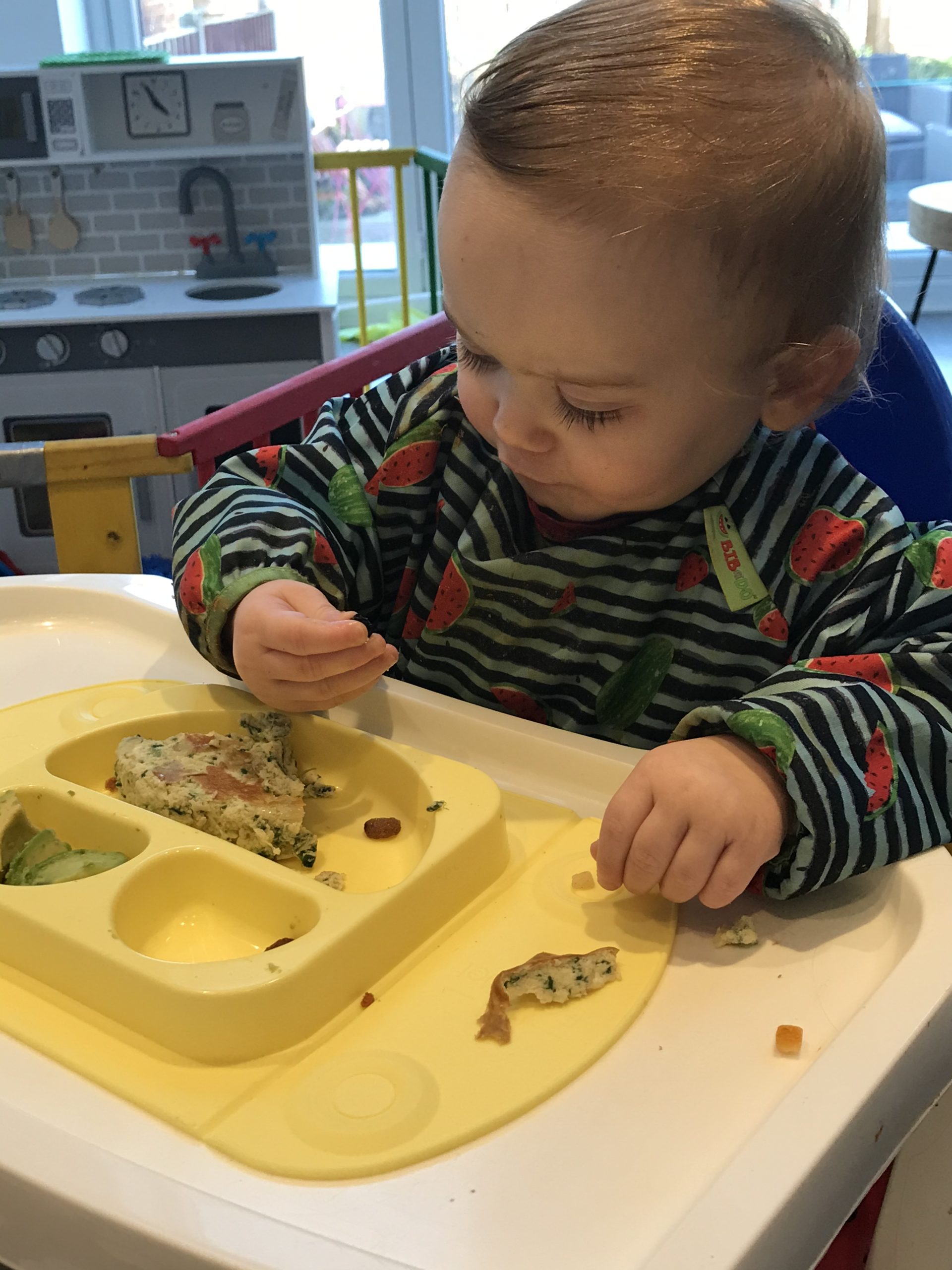Dairy Free Baby Led Weaning

Eczema, feeding aversions, reflux and failure to thrive. These were the signs that began the path to a Cows Milk Protein Allergy (CMPA) and a whole host of unexpected considerations for our weaning journey. Dairy free weaning had never been the plan.
Weaning is challenging allergies or none. But, it does get easier. Even if your little one has extra dietary considerations, weaning will get easier! It can be so tempting to push your baby along to the next milestone, but its so important you don’t begin Baby Led Weaning (BLW) until your baby is really ready. The paediatricians and health visitors say 6 months, but there are signs of readiness to look out for before you start.
Signs of Readiness for Baby Led Weaning
- Sit up with little or no support.
- Hold their head steady.
- Reach out and grab things effectively.
- Take objects to their mouth quickly and accurately.
- Make gnawing and chewing movements
If you’re looking for more general BLW advice take a look at my Top Baby Led Weaning Tips but if, like us, your weaning will be dairy free, read on.
Tips for Dairy Free Weaning
1. Know the Difference Between CMPA and Lactose Intolerance
CMPA and lactose intolerance are two totally different things and completely unrelated. But try telling that to a grandparent, aunt, uncle, friend or anyone else who’s never heard of it before. Lactose intolerance in when the body has difficulty breaking down the sugar in milk, lactose. CMPA is when an infant’s immune system reacts abnormally to the proteins in cow’s milk. Lactose free milk and other products will not stop CMPA reactions. Parents know this, but prepare yourself to educate everyone around you.
2. Be Wary of Other Animal Milk Sources
When looking for a suitable alternative to cow’s milk, goat and sheep’s milk could seem like a possible alternative. Unfortunately, the protein in goat and sheep’s milk is similar in structure to cow’s milk protein. This means most of the time, the immune system will mistake the two and cause a reaction in someone with a cow’s milk allergy in the same way as dairy.
3. Check the Ingredients of Everything
This one may seem obvious, but always read the ingredients. We are lucky to live in a world where allergens are hilighted in bold on the back packaging of products so check them. Even things you would bet were safe, check. Did you know deli meats can contain milk protein as a binder? me neither!
4. Find the Free From Sections in Your Local Supermarket
Free From products are increasingly popular and while you may occasionally pay a little more for the ease of “dairy free” bing pointed out for you, when you’re starting out with cutting out milk products they can be really helpful. Most supermarkets have two sections, one in the fridges and one down the aisles.
5. Find Ways to Replace Missing Vitamins and Minerals
Milk and dairy products are good sources of protein, calcium and vitamins D and B12. It is important to find replacement sources when we cut out dairy. Good sources of calcium are oily fish, green leafy veg such as kale, plus nuts, seeds, dried fruit, pulses and whole grains. Vitamins D and B12 can be found in oily fish, eggs and fortified cereals.
6. Introducing Other Allergens
With having one allergy to cow’s milk, your little one is at an increased risk of allergies to other foods as well. For safety, you should introduce the most common allergenic foods to their diet one by one. Watch for signs of reactions after introducing new foods and before moving on to the next. Remember, reactions can be immediate or delayed to as long as three days after eating the food.
The most common foods that children are allergic to are cow’s milk, eggs, soya, peanuts, tree nuts, fish, wheat and sesame.
7. Remember Their 5-A-Day
Fruit and vegetables are a good source of vitamins, minerals dietary fibre and also, they don’t contain milk. They’re a great snack or side for BLW babies and just as for adults the recommendation is to offer 5 portions each day. There aren’t any official guidelines for the sizings of one portion but we found these from a reputable nutritionalist
- At stage 1 (around 6 months) one portion = 30g
- Stage 2 (from 7 months) one portion = 35g
- Stage 3 (from 10 months) one portion = 40g
8. Be Mindful of Soy Based Replacement Ingredients
When looking for a dairy free yogurt we were so made up to find a whole range of non dairy flavours readily available that initially we didn’t do any further research. Our little one loved the soy based yoghurt poured over his berries. We actually didn’t eve consider there’d be cons to him eating this. I’m not here to preach, and the research is readily available, but educate yourself on the pro’s and con’s of soy before you start. We now opt for coconut based yogurts.
For further reading head over to CMPA resources
